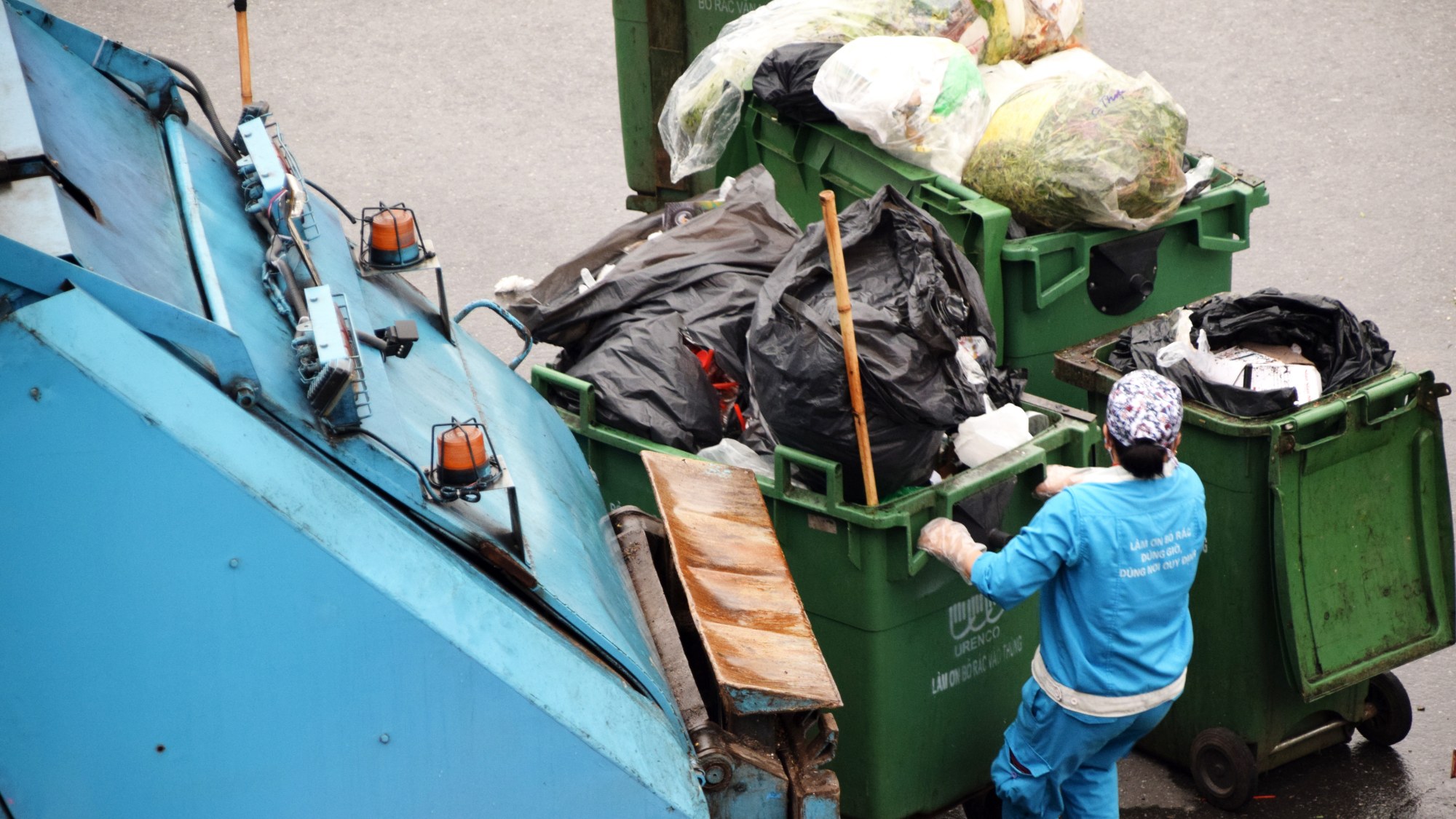Last week, images of 5,000 tons of untreated trash on Truong Han Sieu, one of the major roads in Hoa Binh Province, brought renewed attention to Vietnam’s seemingly unsolvable waste problem. The one-kilometer-long trash pile isn’t just an eyesore to vehicles passing by; it’s a threat to human health and the environment.
Provincial authorities said the garbage has piled up and remained untreated because the Hoang Long waste treatment plant has already exceeded its capacity. Another nearby treatment facility has paused operations due to road construction.
While the new multibillion-dollar financial support for Vietnam’s clean energy transition is a sure reason to hope for a greener future, the country’s waste management continues to worsen by the day.
Rapid economic growth, urbanization, and changing lifestyles have led to a plastic pollution crisis in Vietnam, according to a World Bank report. An estimated 3.1 million metric tons of plastic waste is discharged on land in Vietnam annually. At least 10% of this mismanaged waste leaks into the waterway. The leakage volume could more than double by 2030 under the business-as-usual scenario.
Read: Vietnam’s ESG And Climate Change Future

Vietnam is considered one of the world’s largest contributors of mismanaged plastic waste, ranking 14th based on data from a study by Meijer et al. published in the Science Advances journal. The country produces about 2% of the total mismanaged plastic waste globally, the same as Thailand, Pakistan, and Europe.
Globally, more than 350 million tons of plastic waste are generated yearly. Of that, roughly one-fifth ends up in the mismanaged category, which means they are dumped or littered without proper waste management practices.
Inadequate waste management infrastructure — like what’s happening now in the northern province of Hoa Binh — and poor implementation of waste management policies have turned Vietnam into a top polluter of land and waterways.
Read: 5 Alarming Facts About Plastic Pollution In Vietnam
Plastic waste accounts for most of the waste found in rivers and coastal sites, accounting for 94% of the total items and 71% by weight. Over 60% of plastic items are single-use and low-value plastic, such as food containers and straws.
Top plastic wastes

The World Bank found that garbage from takeaway food — including the actual food container, plastic cutlery, cups, lids, drink stirrers, and straws — makes up 44% of waste in dump sites.
The high percentage was driven by the increasing popularity of take-away and food delivery services, especially during the COVID-19 lockdown in 2021. A single food delivery uses at least three plastic items, which all go unrecycled after.
Read: To Reduce Plastic Waste, F&B Vendors Choose Eco-Friendly Takeaway Packaging
Fisheries-related and household wastes account for 33% and 22%, respectively. Surprisingly, agricultural and medical-related wastes only account for about 1% of the total waste found in dumpsites.
A 2021 study by the International Finance Corporation and World Bank revealed that only 33% of commonly used plastics disposed of annually in Vietnam are recovered and recycled. These tons of plastic trash end up sitting idly in landfills or floating to the rivers and into oceans, expanding damage to marine ecosystems.
In its National Action Plan for Management of Marine Plastic Litter by 2030, Vietnam’s government has committed to cutting marine plastic litter by 50% by 2025 and 75% by 2030. Some measures have already been put in place, including the ban on producing and importing plastic bags for domestic use by 2026 and most single-use plastic products by 2031.

The World Bank has proposed this year for the government to restrict the usage of the most common single-use plastic (SUP) items — non-degradable plastic bags, expanded polystyrene (EPS) food containers, and plastic straws.
“International experience shows that the benefits of phasing out single-use plastics outweigh the costs. However, effective transition requires a phased approach that offsets the losses of producers while preparing and creating incentives for consumers and industries to change their behavior,” a World Bank statement reads. It also suggested imposing fees on non-biodegradable plastic bags and coffee-to-go cups.
Eliminating all the SUPs will generate financial benefits by reducing waste removal costs and achieving cleaner seas for fisheries, ports, and tourism. More importantly, it benefits the environment by reducing greenhouse gas emissions supporting Vietnam’s net-zero goal.
